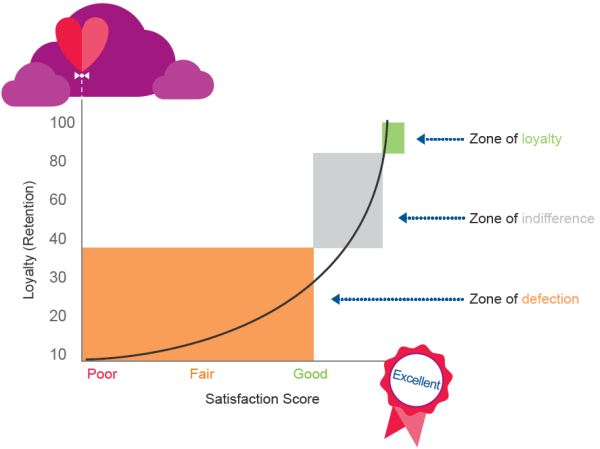A focus on customer lifetime value (CLV) is vital in order to increase satisfaction and engender loyalty. Good relationships developed with sales and technical teams are the strongest drivers of customer loyalty in business-to-business markets.

Customer lifetime value: Building solid customer relationships
A good marketing strategy generates revenues from both new and existing customers. New customers provide the necessary injection of fresh blood for a healthy, growing company. However, it is the existing customers that provide a solid foundation.
Nearly all businesses have the opportunity for a continuing relationship with their customers and, over the years, the revenue generated becomes a "customer lifetime value" (or "CLV").
The lifetime value of a customer depends very much on what is being sold. People do not move house often and so an estate agent could believe that the lifetime value of customers is low. However, the word-of-mouth associated with the move could be significant. In a completely different line of business, a baker sells a loaf for very little but repeated sales over 20 years could run to a cumulative value of many thousands of dollars from a single customer.
Lifetime value: 3 typologies
Customers can be divided into three groups:
- Those who stay loyal and are unlikely to shop anywhere else
- Those who have moved on and will never come back
- And those who regularly shop around and may well return in the future.
Our concern is particularly to keep the loyal customers loyal and to stop other customers defecting.
Customer lifetime value and market research: How to measure CLV
Loyalty can be assessed by asking people how likely they are to recommend a company, using a scale from 0 to 10. It has been determined that there is a strong correlation between people giving a score of 9 or 10 out of 10 on this scale and their likelihood of becoming loyal customers. It is quite exceptional to have more than 30-40% of customers give a score of 9 or 10.
The problem for most companies is not the number of customers that give a low score of 6 or below but those who simply believe the company is satisfactory, scoring 7 or 8 out of 10. The group giving a “middling” score often makes up the bulk of the customer base. It is this group who award passable but mediocre scores that are of greatest concern as their heads could easily be turned if some other supplier arrives on the scene with what seems like an attractive offer.
Measuring customer lifetime value (CLV): Defining loyalty and "revenue at risk"

How to build customer lifetime value (CLV)
Loyalty is hard earned. It does not come from a bunch of flowers or a nice smile, though this can help. It is earned in small servings, over time, and can so easily be lost by one false move.
True loyalty often arises when a company does something extra ordinary to get a customer out of trouble. There will be times when a customer requires an urgent delivery or a machine stops working and a supplier who solves the problem will be remembered. It doesn’t have to be problem-solving that engenders loyalty.
Case study: British Sugar is one of the largest suppliers of sweeteners in Europe. It worked hard to win a customer in Northern Ireland. On the morning of the first bulk delivery a young woman accompanied the blue British Sugar truck as it drove into the customer’s plant. She introduced herself as a customer service representative and explained that although the customer may never see her again, she would always be at the end of a phone to solve problems should they arise. She had made the trip to meet the customer especially to make this point and the customer never forgot it.
To learn more about this topic, please visit the following publications:
Loyalty – How To Win Devotion From Your Customers
A Practical Guide To Improving Customer Satisfaction


